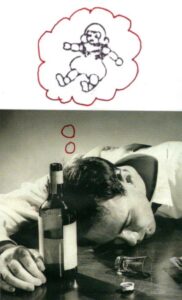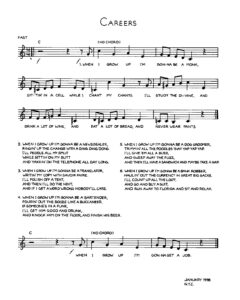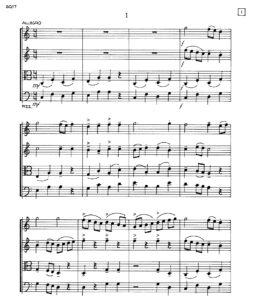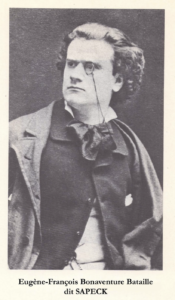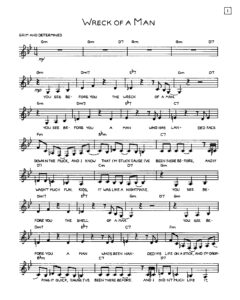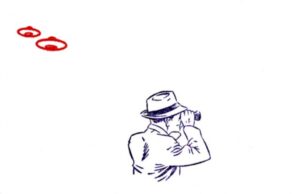Index Cards (97)
December 9th, 2020 · Comments Off on Index Cards (97)
Comments Off on Index Cards (97)Tags: *Index Cards
Careers
November 26th, 2020 · Comments Off on Careers
A brief song about the many careers a child might aspire to. This too can be found on That Regrettable Weekend and in The Doug Skinner Songbook.
Comments Off on CareersTags: *Music · C
String Quartet 1: Eddie Unchained
November 12th, 2020 · 2 Comments
I’ve posted excerpts from several of my string quartets, but neglected the first one, which consists of several pieces from my musical Eddie Unchained. Well, here’s how it begins…
→ 2 CommentsTags: *Music · E
String Quartet 17: Lockdown
November 2nd, 2020 · 2 Comments
My 17th string quartet was written during the pandemic. It consists of two movements: a brisk tune and round, strictly diatonic in C, E-flat, and A; and a slow movement in not-strictly-diatonic G. More may follow.
→ 2 CommentsTags: *Music · S
Announcement
October 25th, 2020 · Comments Off on Announcement
I have been asked by Norman Conquest, the indefatigable director of Black Scat Books, to post this announcement. Perhaps some of you will see fit to contribute to this useful reference work.
Comments Off on AnnouncementTags: *Words
The Illustrious Sapeck
October 20th, 2020 · 2 Comments
In the interest of metaphysical and pataphysical confusion, some of my entries in the upcoming second volume of Le Scat Noir Encyclopaedia are fictional, and some are factual. This one, on a famous Parisian prankster, is factual.
THE ILLUSTRIOUS SAPECK. Eugène Bataille (1853-1891), better known as the Illustrious Sapeck, is not to be confused with Eugène Battaille (1817-1882), the painter of historical and religious subjects, or with Eugène Bataille (1854?-?), the bass who enjoyed a long career with the Opéra-Comique and the Opéra de Paris.
This Bataille, as Sapeck, was admired by his colleagues as “the emperor of pranksters.” He sent out cards announcing his public appearances, in which he greeted the public in the gaudy costume of a “Hungarian composer,” or sat in a dogcart drawn by two horses, cheered on by hired street urchins. On one occasion, he shaved his head and painted it blue, explaining to the police that it “prevented dark thoughts.”
His exploits were inevitably ephemeral, but documented in the Bohemian press, often by his sometime accomplice Alphonse Allais. Like his operatic namesake, he was a gifted vocalist, equally adept at imitating dogs where dogs were prohibited, or at passing himself off as a “vocal inspector” at a girl’s school. Like his two-T namesake, he was also a painter, once giving a grocer a grisly sketch of a butchered rabbit, then sending his friends in to admire the priceless “original Sapeck.” He not only painted animals, but painted on them: the citizens of Honfleur were treated to a landscape of Normandy rendered in impasto on the curate’s donkey, and to the transformation of all the local horses into zebras.
He supplemented this career with cartoons for Scapin, Tout-Paris, La Lune Rousse, and other periodicals; illustrations for books by Coquelin Cadet, Léo Taxil, and others; and his own paper L’Anti-Concierge. His “Mona Lisa Smoking a Pipe,” shown at the Arts Incohérents in 1883, probably inspired Duchamp.
His friends were baffled when he moved to Oise at 30 to become a prefectural counselor. Six years later, he was committed to a mental hospital, where he died at 38.
The following year, Taxil published his sensational anti-Masonic hoax, The Devil in the 19th Century, under the name of “Dr. Bataille,” in memory of his late collaborator, “the illustrious Sapeck, the prince of jokers in the Latin Quarter.”
→ 2 CommentsTags: *Words · I
Wreck of a Man
October 12th, 2020 · 2 Comments
Here’s another song from White Knuckle Sandwich, giving me a chance to sing gloomy lyrics in my lower range. I’ve also performed this with David Gold adding an obbligato on viola and duck call.
→ 2 CommentsTags: *Music · W
Aleatoric Temperament and Boxing Kangaroo Rats
October 1st, 2020 · Comments Off on Aleatoric Temperament and Boxing Kangaroo Rats
In 2017, Black Scat Books published Le Scat Noir Encyclopaedia, which presented “all human knowledge in a single volume.” A sequel is now in preparation, offering even more of all human knowledge. I wrote a few entries, including these on music and popular entertainment.
ALEATORIC TEMPERAMENT. Rather than choosing pitches by the ratios of frequencies, or by an equal division of the scale, aleatoric temperament determines them by chance. Randomly generated integers give the number of pitches in the octave, and then their frequencies. If, for example, you obtain fifteen pitches between A440 and A880, you might then obtain the series 457, 463, 480, 514, 551, 603, 649, 707, 756, 787, 790, 824, 835, 837, and 861, and tune your instrument accordingly. You can, of course, use a different temperament for each octave.
BOXING KANGAROO RATS. In the late 19th century, the popularity of boxing matches between men and kangaroos, in both Australia and Europe, prompted American showmen to offer similar attractions. Kangaroos were rare and expensive, so other animals were substituted. America’s only native marsupial, the opossum, was easy to obtain, but its habit of playing dead when threatened failed to entertain audiences. Consequently, several outfits, including Pixley’s Dime Museum and Carter’s Combined Menagerie, turned to kangaroo rats. Although the rats did hop like kangaroos, they were too small to present a challenge to human boxers, and even the most sadistic crowds balked at watching a grown man punch a tiny defenseless animal. Boxing kangaroo rats are now a mere footnote in American popular entertainment.
Comments Off on Aleatoric Temperament and Boxing Kangaroo RatsTags: *Words · A
Index Cards (96)
September 24th, 2020 · 2 Comments
→ 2 CommentsTags: *Index Cards
Cries of Vendors
September 17th, 2020 · 2 Comments
A keyboard version of a bit of my String Quartet 15: harmonizations of two street vendors’ cries notated by Friedrich Weber in 1887.
→ 2 CommentsTags: *Music · C

